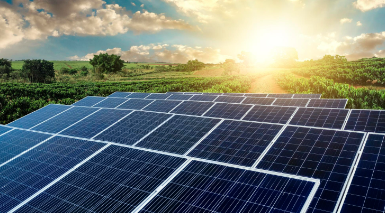Introduction:
In an era of growing energy demand and environmental awareness, the quest for independence in energy production has taken on new significance. Amidst this landscape, solar energy emerges as a beacon of hope, offering the promise of self-sufficiency and sustainability. In this exploration, we delve into the concept of Solar Sovereignty, a paradigm shift that is redefining the very notion of independence in energy.
Embracing Solar Sovereignty:
Solar Sovereignty represents more than just a shift in energy sources; it embodies a fundamental reimagining of our relationship with power. No longer are we beholden to centralized energy grids or fossil fuel dependencies. Instead, we have the opportunity to reclaim control over our energy destiny, harnessing the abundant power of the sun to meet our needs in a clean, sustainable manner.
At its core, Solar Sovereignty is about empowerment – empowering individuals, communities, and nations to take control of their energy future. Whether it’s installing rooftop solar panels on a single-family home or developing large-scale solar farms to power entire cities, solar energy gives us the tools to break free from the constraints of traditional energy systems and forge a path toward true independence.
Benefits of Solar Sovereignty:
The benefits of Solar Sovereignty are manifold, extending far beyond mere energy independence. By harnessing the power of the sun, we can reduce our reliance on finite and environmentally harmful fossil fuels, mitigating the impact of climate change and preserving our planet for future generations.
Moreover, Solar Sovereignty has the potential to catalyze economic development and social empowerment, particularly in underserved communities. By investing in solar infrastructure and local energy projects, communities can create jobs, stimulate economic growth, and enhance energy access for all residents.
Furthermore, Solar Sovereignty fosters resilience in the face of external disruptions, such as natural disasters or geopolitical conflicts. Decentralized solar energy systems are inherently more resilient and reliable than centralized grids, ensuring that communities can maintain access to power even in the most challenging circumstances.
Challenges and Opportunities:
Despite its immense potential, Solar Sovereignty is not without its challenges. Barriers such as upfront costs, regulatory hurdles, and technological limitations can pose significant obstacles to widespread adoption. However, these challenges also present opportunities for innovation, collaboration, and collective action.
By investing in research and development, streamlining permitting processes, and implementing supportive policies and incentives, governments, businesses, and individuals can overcome these barriers and accelerate the transition to a solar-powered future.
Educational and Economic Opportunities:
Solar Sovereignty creates educational and economic opportunities for communities, particularly in regions where traditional energy sources are scarce or unreliable. By training local residents in solar installation and maintenance, communities can develop a skilled workforce capable of supporting the growing solar industry. Additionally, solar projects can serve as educational tools, inspiring future generations to pursue careers in science, technology, engineering, and mathematics (STEM) fields. Moreover, solar energy can stimulate economic growth by attracting investment, creating jobs, and fostering innovation in local economies. By harnessing the power of the sun, communities can unlock a wealth of opportunities for sustainable development and prosperity.
Conclusion:
Solar Sovereignty represents a paradigm shift in the way we think about energy – from a commodity controlled by a few to a resource owned and managed by many. By embracing the power of the sun, we have the opportunity to redefine independence, empower communities, and build a more sustainable and equitable world for all.
As we look to the future, let us seize the opportunity to embrace Solar Sovereignty and chart a course toward a brighter, cleaner, and more resilient future. Together, we can harness the power of the sun to transform our energy systems, our communities, and our planet for generations to come.



